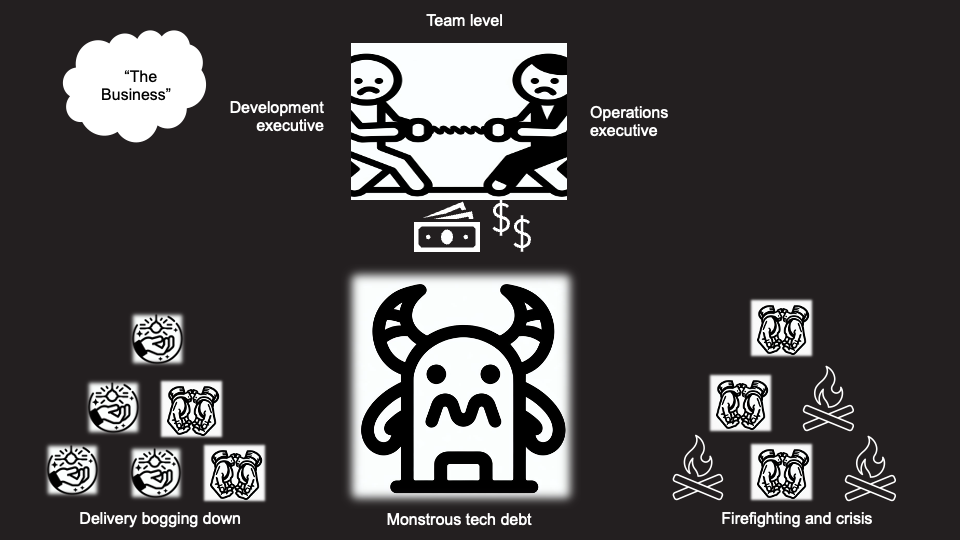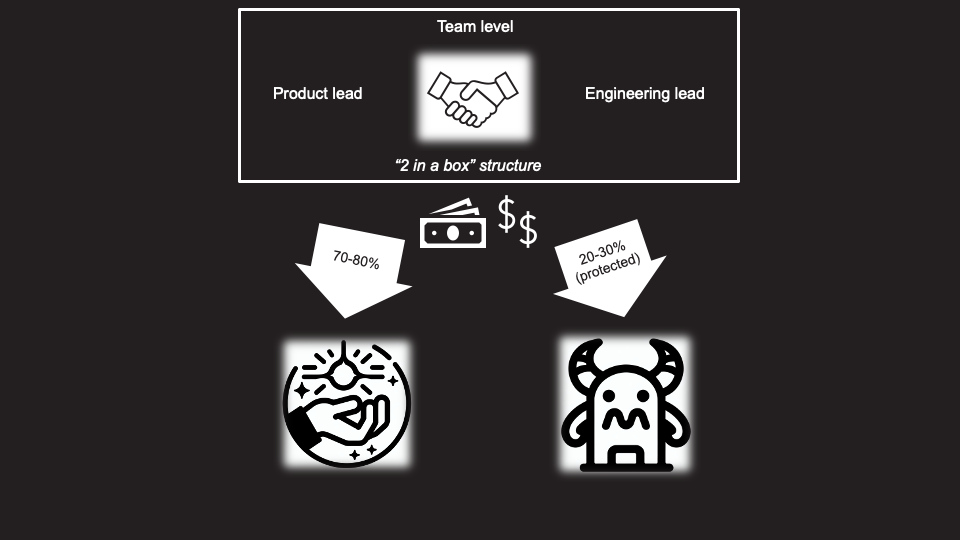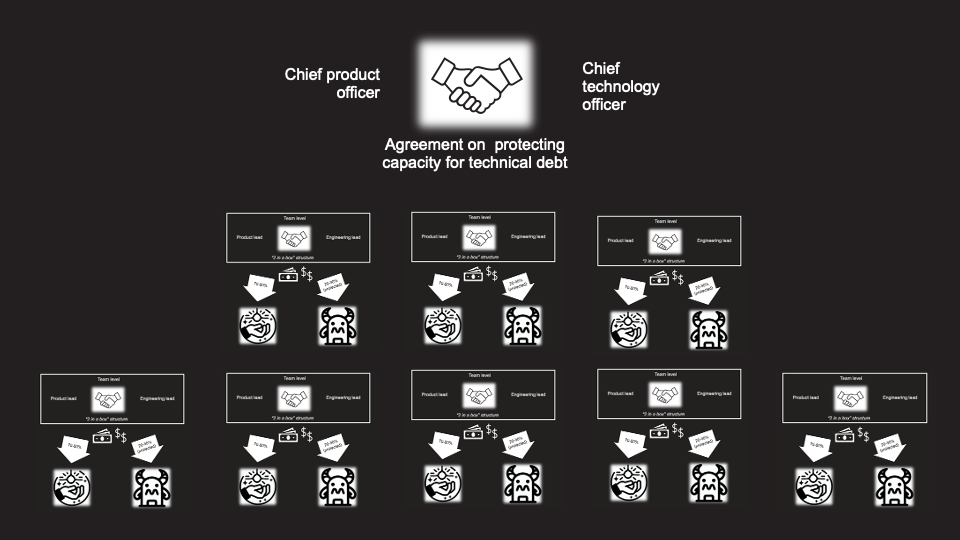Product administration and technical debt are prime of thoughts for a lot of digital and IT organizations, however individuals are unclear on the connection between them each. Do you know that one is an answer for the opposite? Let me clarify.
How Does Tech Debt Come up?
The financial trigger I see time and again: it emerges “within the cracks” between tasks funded to realize new, progressive issues, and technical operations continually pressured for effectivity. Neither facet has clear accountability for the issue, and so mitigating technical debt turns into extremely politicized, with a lot kicking the can down the street – which solely makes issues worse.
However this illustration is simply how conventional “dev” vs “ops” groups would possibly understand it. Each are primarily powerless, as a result of funding doesn’t occur there.
On the org stage, it seems to be like this:

The leaders struggle over who has to pay for technical debt. The event chief could also be “nearer to the enterprise” who’ve the cash, however “the enterprise” is often tired of paying down the debt. In idea “the enterprise” owns either side of the issue, however in actuality tends to give attention to new performance and be a lot much less when, for instance, a required replace to finish of life know-how requires tens of millions of {dollars} of migration prices – primarily to keep up established order.
Discover additionally that most of the tasks on the left are actually handcuffed. That’s as a result of the technical debt has began to additionally decelerate undertaking supply. And operations is more and more combating fires.
Prior to now, leaders would possibly advocate massive scale “IT transformations” and attempt to direct a few of that funding to paying off technical debt. Nevertheless, such transformations are infamous for failing. Forrester additionally has heard that such transformations discover it troublesome to make a return on funding case for big scale technical debt paydowns. Forrester doesn’t suggest ROI as a standards for deciding to rectify technical debt, which must be seen extra as important upkeep spend.
Many people are acquainted with these dynamics in conventional plan/construct/run IT organizations. Many are additionally pursuing product mannequin IT transformations, however I haven’t seen a lot dialogue of the affect of the product mannequin on technical debt. What’s changing into clear is that product is doubtlessly a recreation changer.
Marty Cagan of the Silicon Valley Product Group (one of many main product thinkers I observe) states:
“Most firms with an excellent deal with on tech debt will inform you that they work on tech debt daily, with about 10 to 30 % of the engineering capability.”
However how? How can this stage of funding be sustained when spending is so politicized and fragmented?
Precisely How Does the Product Mannequin Solves for Tech Debt:
Within the product mannequin, the product staff owns each new options and ongoing supply of worth. As my current weblog from the TBM Council identified, more and more product administration is a “enterprise throughout the enterprise” which implies they personal BOTH growth and operational considerations. If the product staff relies on a serious piece of software program approaching EOL, they should finances for its substitute (& related migration prices) in the event that they need to stay “in enterprise.” In a easy “2 in a field” mannequin, we’ve got for instance a detailed partnership between a product lead and an engineering lead.
Right here’s the fascinating side – a hard and fast % of funding is protected and devoted to technical debt. Notice that the tech debt paydown is managed by the engineering lead. That is primarily based on a variety of conversations I’ve had; product leads should still generally tend to give attention to the shiny and new, so the engineering lead takes level on prioritizing the tech debt paydown. Devolution of the authority implies that selections are taken nearer to the knowledge, a key Agile/DevOps worth.

Increased within the org, word that the protected capability for tech debt is established and sponsored on the government stage.

One other supportive, product-related growth is platform engineering, which reduces the prevalence of technical debt (partially) by streamlining the infrastructure portfolio and lowering variation. Sure, this comes at the price of some developer independence, however the days when that was a dominant precedence are completed. There’s rising consensus that an excessive amount of developer autonomy to decide on “taste of the month” tech ends in fragmented and decaying tech stacks which might be poisonous to innovation and agility. Organizations can’t get a deal with on tech debt with so-called “full stack” groups choosing no matter tech strikes their fancy in a given week. Because of this platform engineering has develop into a serious development, because it replaces bureaucratic structure processes and drives infrastructure groups in direction of empathy with their inside prospects.
Abstract Suggestions:
Integrating Dev and Ops on the product staff stage
Defending a “tech debt paydown” stream as an ongoing budgetary precedence
Investing in platform engineering to scale back sprawl
Are you engaged on product working mannequin, tech debt, platform engineering, or their intersections? If that’s the case, drop me a line.



